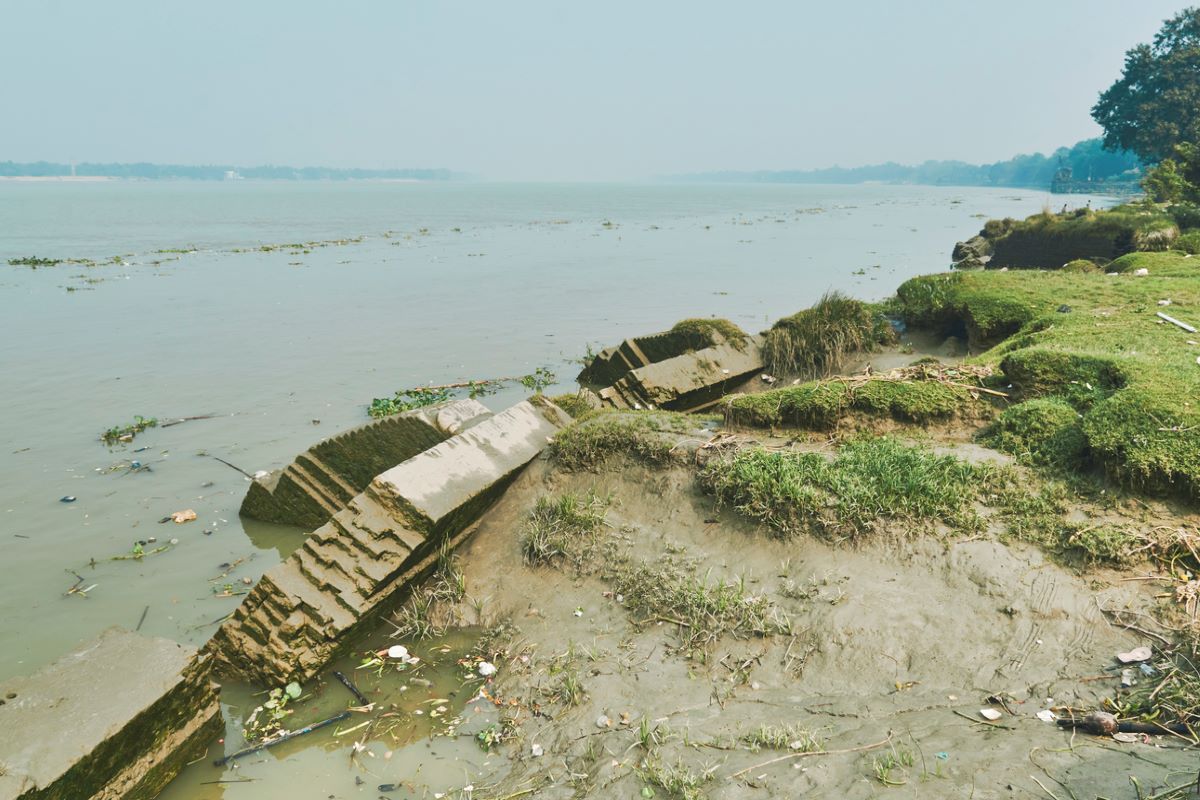Less than four months ahead of the monsoon ~ which was unusually prolonged last year ~ the West Bengal chief minister’s three-page letter to the Prime Minister is remarkably appropriate.
Chiefly, Miss Mamata Banerjee has urged Mr Narendra Modi to intervene so that schemes relating to flood management and restoration can be carried out not the least because of what she calls the “perpetual river erosion” along the Ganga in Malda, Murshidabad and Nadia districts. Though Miss Banerjee is also reported to have mentioned the erosion that plagues the Padma in Bangladesh, the loss suffered by West Bengal is considerable in terms of the damage to public utilities, private property and agricultural land, verily the bedrock of the rural economy.
Flood management and restoration schemes are imperative to save lives and livelihood. Not wholly unrelated are the fragile embankments that tend to break up during heavy rain and high tides. Perhaps it is cause for alarm that over the past two decades, an estimated 2,800 hectares of fertile land had been washed away by the river; the damage to properties, public and private, amounted to Rs 1,000 crore.
“Erosion along the river bank has largely been caused by siltation and frequent shifting of the course following the construction of the Farakka barrage. The Ganga-Padma erosion has had an adverse impact in the context of the Indo-Bangla Ganga Treaty of 1996, both downstream and upstream of Farakka.” It bears recall that in May 2017, the Chief Minister had urged the Farakka Barrage Project Authority (FBPA) to take up anti-erosion and bank protection work. In the event, both river erosion and protection remain unaddressed for the past five years. The Ganga has caused erosion over 400 sq km across Malda, Murshidabad and Nadia districts.
Furthermore, the Union Ministry of Water Resources unilaterally withdrew its earlier decision of 2005 and restored the original jurisdiction of the FBPA from 11.5 km upstream to 5.9 km downstream of Farakka barrage. “Due to this, I had requested you in August 2017 to restore the extended jurisdiction of 120 km by rescinding the earlier decision,” the Chief Minister stated in her letter.
In the absence of any substantial work by the Farakka Barrage Project Authority, the West Bengal government had to take up urgent river-bank protection operations at 31 vulnerable locations over the past four years at a cost of Rs 168.47 crore, she said. After last year’s unusual monsoon, further work along a 9.9 km stretch was recently taken up at a cost of Rs 80.67 crore. Dearth of adequate funds has doubtless impeded reconstruction.
The Chief Minister has urged the PM to reconsider the decision to withdraw the extended jurisdiction of FBPA “so as to fulfil the earlier commitment of the Centre”. In addition to the endemic pollution of the Ganga, the river is still more threatened by the canker of erosion. While pollution is not a natural phenomenon, erosion almost certainly is. It needs to be addressed with urgent dispatch.











